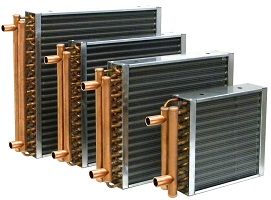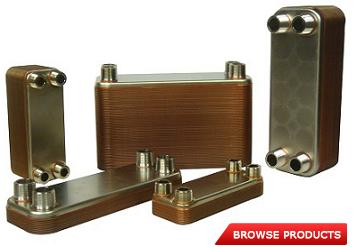Outdoor Boiler Heat Exchangers
If you are currently operating an outdoor wood boiler in your house or property at the moment the outdoor wood boiler heat exchanger is going to be an integral part of the system. The heat exchangers in boilers have the same function as the heat exchanger in a furnace in that they transfer the heat from the flame into a heat transfer medium which is water in the case of your boiler. The outdoor boiler heat exchanger is most commonly made up of Iron, steel, alloys or copper and is usually located above the burner with cool water entering from the bottom of the heat exchanger and heated water exiting form the top.
Outdoor wood boilers are however not the only place where you will find an outdoor wood boiler heat exchanger as they are used widely in the likes of furnaces, wood stoves, refrigerators and air conditioning systems.
When it comes to safety and inspection time for your boiler you will have an easier time than you would have with a heat exchanger on a furnace for instance. In other words, if there is a crack in your outdoor boiler heat exchanger you will know because there will be a leak there.
The main function of the boiler heat exchanger is to transfer the heat as efficiently as possible. So, if you are looking at saving energy, the boiler heat exchanger comes into its own by recovering the wasted heat and making it useful again.
The outdoor boiler heat exchangers had been used with increasing regularity in the past few years in outdoor boilers and there are a number of advantages that go along with this. For example, if you have an outdoor system you can heat multiple buildings as opposed to just one building. For instance you will be able to heat the likes of your swimming pool, garage, drive-way, barns and various other buildings if you have a system like this in place.
There are however a number of challenges that you can also face when you have an outdoor boiler system. The first thing to remember is that the boiler is non-pressurized, but heating the loop in the home is pressurized. You also need to remember that the outside temperature can drop very low and the outdoor loop will need a water glycol mix to prevent freezing.
It is however possible to overcome these problems by using models where the construction means that it does not suffer with the problems associated with glycol blends and you can also use a variety of different sizes depending on what your needs are.
When choosing your outdoor boiler heat exchanger there are a number of advantages going with a larger model. One of them being that you can get a larger flow through the heat exchanger with the bigger sizes and connections (e.g., 1” mnpt vs 1-1/4” mnpt). When this happens you get a greater fluid flow through the outdoor boiler heat exchanger and subsequently more heat can be transferred at the same amount of time, thus making your system more efficient.







